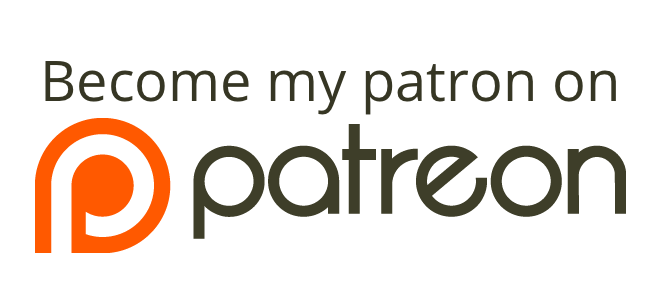The Weekender, June 16, 2017

1) “The lost genius of the Post Office ” (Politico, 16 minutes, June 2017). The subhead: “For almost two centuries, the humble-seeming mail was a hotbed of new ideas. What happened?”
When Americans think about the most innovative agency in the government, they think about the Pentagon or NASA. But throughout much of its history, that title could just as easily have fallen to the Post Office, which was a hotbed of new, interesting, sometimes crazy ideas as it sought to accomplish a seemingly simple task: deliver mail quickly and cheaply. The Post Office experimented with everything from stagecoaches to airplanes—even pondered sending mail cross-country on a missile. For decades, the agency integrated new technologies and adapted to changing environments, underpinning its ability to deliver billions of pieces of mail every year, from the beaches of Miami to the banks of Alaska, for just cents per letter.
We think a lot about how innovation arises, but not enough about how it gets quashed. And the USPS is a great example of both. Today, what was once a locus of innovation has become a tired example of bureaucratic inertia and government mismanagement. The agency always faced an uphill battle, with frequent political interference from Congress, and the ubiquity of the internet has changed how Americans communicate in unforeseeable ways. But its descent into its current state was not foretold. A series of misguided rules and laws have clipped the Post Office’s wings, turning one of the great inventors of the government into yet another clunky bureaucracy. As a new administration once again takes up the cause of “reinventing government,” it’s worth considering what made the Post Office one of the most inventive parts of the nation’s infrastructure—and what factors have dragged it down.
2) Support Now I Know: As many of you already know, researching, writing, and (save for the daily typo or two) editing Now I Know is a pretty big endeavor on my part. Keeping the project financially sustainable is an on-going battle, and to that end, I’ve tried many different avenues.
One of them — a major one at that — is my on-going Patreon campaign. It’s an old-style patronage campaign, where readers such as yourself support Now I Know through a monthly pledge. A $5 a month pledge comes out to about 25 cents per article I send; a $1 a month pledge is roughly a nickel. Please consider supporting Now I Know through Patreon by clicking here. It’s entirely optional and you’re under no obligation to do so, so don’t feel bad if you can’t or don’t want to. But if you do, please know it all adds up, and I greatly appreciate your support. Thanks!
3) The Now I Know Week in Review:
- Monday: Fighting North Korea in a Flash. How you can take your (likely) disused, old technology and help bring regime change in North Korea. Really.
- Tuesday: China’s Extremely Personal Loans. Caution: Involves R-rated selfies.
- Wednesday: The Hamburger on Display in a Canadian Legislature. It’s probably not edible at this point.
- Thursday: Why Parisian Bakers Can’t Always Go On Vacation.Well, couldn’t, until 2015.
And a bonus item: Family Food — a really weird moment from the game show Family Feud.
4) “How to Sleep” (The Atlantic, 14 minutes, January 2017). The subhead: “Should you drink more coffee? Should you take melatonin? Can you train yourself to need less sleep? A physician’s guide to sleep in a stressful age.” Caution: may make you want to take a nap.
WeekenderAdUnits
5) “Charles Proteus Steinmetz, the Wizard of Schenectady” (Smithsonian, 8 minutes, August 2011). I’ve wanted to write about him for a while because of the story below, but the story is just a little anecdote. His bio goes well beyond it.
Before long, the greatest scientific minds of the time were traveling to Schenectady to meet with the prolific “little giant”; anecdotal tales of these meetings are still told in engineering classes today. One appeared on the letters page of Life magazine in 1965, after the magazine had printed a story on Steinmetz. Jack B. Scott wrote in to tell of his father’s encounter with the Wizard of Schenectady at Henry Ford’s River Rouge plant in Dearborn, Michigan.
Ford, whose electrical engineers couldn’t solve some problems they were having with a gigantic generator, called Steinmetz in to the plant. Upon arriving, Steinmetz rejected all assistance and asked only for a notebook, pencil and cot. According to Scott, Steinmetz listened to the generator and scribbled computations on the notepad for two straight days and nights. On the second night, he asked for a ladder, climbed up the generator and made a chalk mark on its side. Then he told Ford’s skeptical engineers to remove a plate at the mark and replace sixteen windings from the field coil. They did, and the generator performed to perfection.
Henry Ford was thrilled until he got an invoice from General Electric in the amount of $10,000. Ford acknowledged Steinmetz’s success but balked at the figure. He asked for an itemized bill.
Steinmetz, Scott wrote, responded personally to Ford’s request with the following:
Making chalk mark on generator $1.
Knowing where to make mark $9,999.
Ford paid the bill.
6) “Here’s How Much Businesses Pay To Get On Those Big Blue Exit Signs” (Jalopnik, 7 minutes, June 2017). If you don’t know what “big blue exit signs” are, click the link — there’s a pic at the top. These signs basically tell travelers about food, lodging, and gasoline options off the next exit. But who decides which businesses go on the signs? It’s a pretty big business in its own right.
Have a great weekend!

